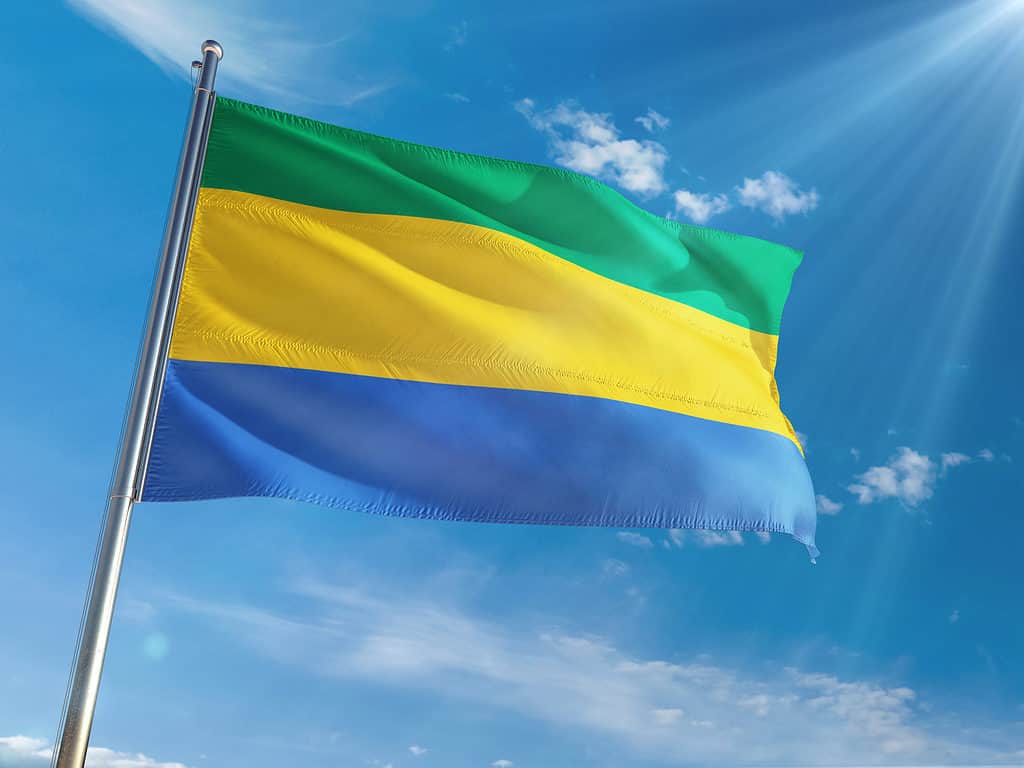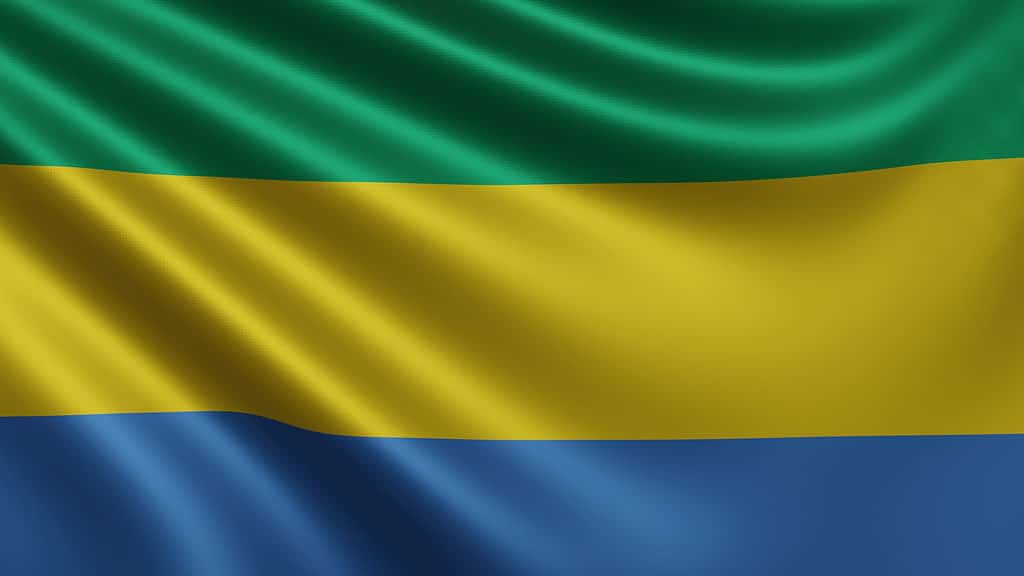Gabon isn’t a large or all that well-known country, but that doesn’t mean it isn’t chock-full of history and beautiful cultural heritage! The country is located along the western African coast, just to the west of the Republic of Congo, to the south of Cameroon and Equatorial Guinea, and to the north of Angola. Today, we are going to be learning about one of the most important national icons regarding Gabon; its flag! Let’s discover the flag of Gabon, including its history, meaning, and its historical significance. Let’s get started!
The Flag of Gabon: What Does it Look Like?
The flag of Gabon is pretty recognizable due to its unique coloration and clear design decisions. The flag of Gabon is a horizontally symmetrical tricolor of three equal bands of green, yellow and blue. The green band is located at the top, the yellow is in the middle, and the blue is at the bottom. The green is rich and dark, representing the country’s abundant forests. The yellow band is a vivid golden color, representing the equator and the sun. The blue is a bright, vibrant blue, which represents the ocean and Gabon’s coastline.
The 3:4 proportions of the flag are rather unique. Most national flags have a 2:3 ratio, making them longer than they are tall by a noticeable margin, but the flag of Gabon’s more square design makes it distinguishable from other standard flags. The only other flags with this unique ratio are the Democratic Republic of Congo, Papua New Guinea, and San Marino.
There are some regional variations of the flag, primarily as a representation of the nine provinces within the country. Each of the provinces has its own coat of arms that can be represented on a provincial flag. Additionally, other variations include the three presidential flags from 1960-present, the naval flag, and the ethnic flag of the Kongo people.

©iStock.com/sezer ozger
The Flag of Gabon: The History Behind the Flag
Gabon was once a French colony, and the flag of Gabon has its roots in the French tricolor. During the French colonial period, Gabon used the French tricolor as its official flag. The French tricolor of red, white, and blue has been the official flag of France since 1794, and all of France’s direct colonies were represented by the national flag that most people recognize as the French flag today.
In 1960, Gabon gained independence from France, and the French tricolor was replaced by the flag of Gabon. The new flag was designed in 1959 to reflect the country’s culture and history. The original flag that was designed directly after their bid for independence was slightly different that the one today. Originally the yellow stripe in the middle of the blue and green stripes was slightly thinner. Additionally, the French flag was situated in the top left corner of the flag in a position known as its canton. The canton of a flag is often used to fly an emblem and occasionally represents another country’s flag if it had a large impact on it. An example of a national flag with another country’s flag as the canton is Australia, a blue flag with stars, included with the Union Jack (from the United Kingdom) in the corner.
In 1960, however, the adjustments to the current flag of Gabon included removing the canton and making the yellow stripe equal in size to the other two stripes. Currently, these adjustments are still in place, and Gabon hasn’t had any other changes to its national flag in the years since.

©iStock.com/IFest
The Flag of Gabon: Symbolism and Meaning
The flag of Gabon consists of three equal horizontal bands of green, yellow, and blue. The green band symbolizes the country’s natural resources and forests, the yellow band represents the equatorial placement and the importance of the sun, and the blue band represents the Atlantic Ocean, an essential element for the country’s prosperity.
These various colors and their representations all go to show just how naturally rich the country of Gabon is. The natural resources of Gabon include petroleum, minerals (mostly manganese), and timber. In fact, timber is one of the most important elements for Gabon’s economy, with over 85% of its entire territory currently covered in forests.

©iStock.com/Bertrand Godfroid
Overall, the flag of Gabon is a powerful symbol of the country’s natural resources, its commitment to unity and cooperation with other African nations, and its hopes for the future. It is a representation of the country’s national identity and its aspirations as a nation.
Up Next
- The Flag of France: History, Meaning, and Symbolism
- The Flag of the United States of America: History, Meaning, and Symbolism
- The Don’t Tread On Me Flag and Phrase: History, Meaning, and Symbolism
The post The Flag of Gabon: History, Meaning, and Symbolism appeared first on AZ Animals.
from Animal News, Facts, Rankings, and More! - AZ Animals https://ift.tt/UzWSt9w